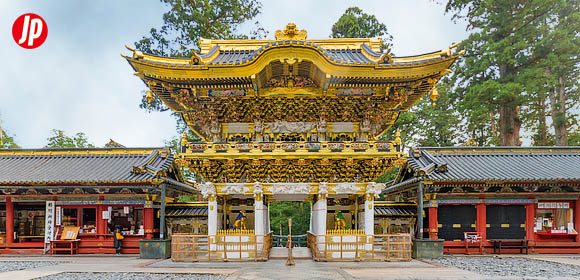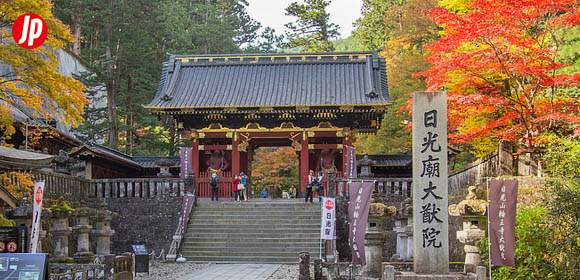
Nikko is located in the northwestern part of Tochigi Prefecture and is one of Japan’s most famous tourist areas. In addition to the natural beauty of Nikko Mountains, Lake Chuzenji, and the Kinugawa River, there are also many cultural attractions, including World Heritage Sites such as Nikko Toshogu Shrine, Futarasan Shrine, and Nikko Rinno-ji Temple.
World Heritage “Two Shrines and One Temple”
In 1999, Nikko Toshogu Shrine (日光東照宮), Futarasan-jinja Shrine (二荒山神社), and Nikko Rinno-ji Temple (日光山輪王寺) were inscribed on the World Heritage List, and are known as the “Two Shrines and One Temple” of Nikko. Since then, visitors from around the world have been gathered here, to admire the magnificent Yomeimon Gate (陽明門) and the beautiful statues of the Sleeping Cat and the Three Monkeys in Nikko Toshogu Shrine, as well as the Sanbutsu-do (三仏堂) and Taiyuin (大猷院) at Rinno-ji Temple.

Nikko Toshogu Shrine
Where Ieyasu Tokugawa Rests
Nikko Toshogu Shrine is the main shrine of all the Toshogu Shrines in Japan, and Tokugawa Ieyasu was buried here in 1617. It has magnificent national treasures such as the Yomeimon Gate, Karamon Gate, and beautiful sculptures such as The Sleeping Cat and The Three Wise Monkeys.

Nikko Futarasan Jinja Shrine
Nantai, Faith of Man's Body Mountain
Nikko Futarasan Jinja Shrine has a history of 1,200 years, dedicated to Mount Nantai. The main shrine of Futarasan Jinja Shrine is located next to Nikko Toshogu Shrine, filled with ancient trees, and is worshipping Okuninushi. In addition to the main shrine, Futarasan Jinja Shrine also has the Chugu-shi Shrine, the Okumiya Shrine, and the other sub-shrines.

Nikko Rinnoji Temple
World Heritage Temple Complex
Nikko Rinnoji Temple, the collective name for the Buddhist temple complex in Nikko, including Sanbutsudo, Taiyuuin, and Jyougyoudo, was founded in 766 A.D. by monk Shodo Shonin. Sanbutsudo is the main hall of the temple and houses the three golden Buddhas, while Taiyuuin is the Mausoleum of the third Tokugawa family shogun.






























